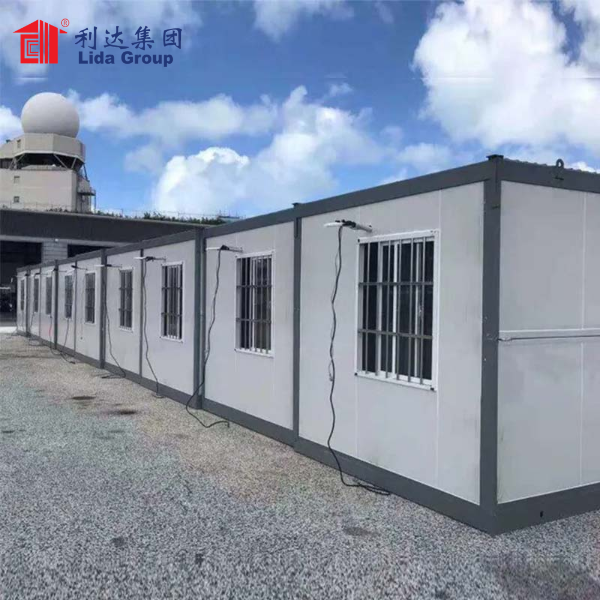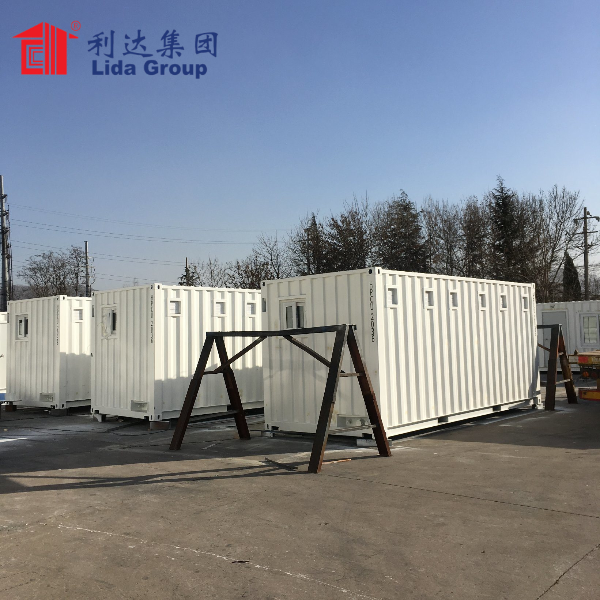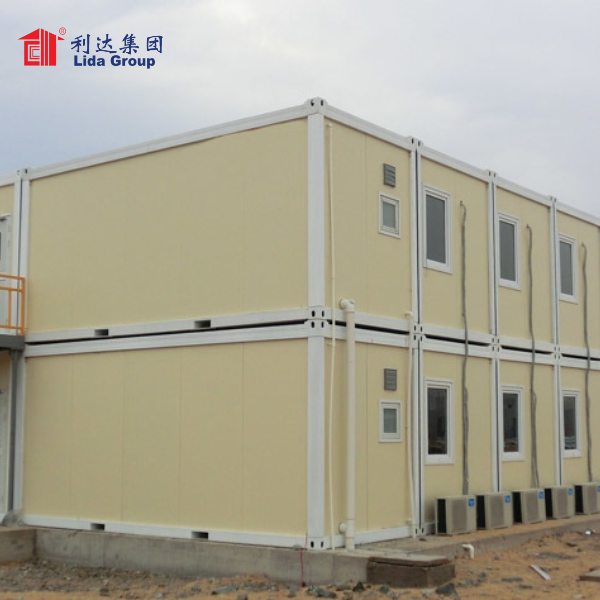Introduction:
In recent years, the concept of sustainable architecture has gained significant attention as a response to the environmental challenges we face. Lida Group, a leading provider of modular container solutions, has emerged as a pioneer in green container architecture. Their innovative approach combines sustainability with style, creating environmentally friendly and aesthetically pleasing living spaces. In this article, we will delve into Lida Group’s green container architecture, exploring the principles behind it, the sustainable features it incorporates, the design aesthetics it offers, and the positive impact it has on the environment and the inhabitants.
- The Essence of Green Container Architecture:
1.1 The Marriage of Sustainability and Style:
- Green container house seeks to blend environmental consciousness with contemporary design.
- It aims to create sustainable living spaces that are visually appealing and meet modern lifestyle demands.
- Lida Group’s approach integrates eco-friendly practices without compromising on aesthetics.
1.2 Reimagining Shipping Containers:
- The use of repurposed shipping containers as building blocks for sustainable structures.
- Transforming these industrial objects into habitable spaces that prioritize energy efficiency and resource conservation.
- The inherent strength and modularity of containers lend themselves well to sustainable architectural design.
1.3 Key Principles of Green Container Architecture:
- Energy efficiency and reduced carbon footprint through passive design strategies and renewable energy integration.
- Responsible material sourcing, recycling, and upcycling to minimize waste and environmental impact.
- Harmonious integration with the natural surroundings and optimizing the use of natural resources.
- Sustainable Features of Lida Group’s Green Container Architecture:
2.1 Energy Efficiency and Passive Design:
- Careful consideration of solar orientation, shading, and natural ventilation to reduce reliance on mechanical systems.
- Energy-efficient insulation materials and techniques to minimize heat transfer and maintain comfortable indoor temperatures.
- Integration of energy-saving technologies, such as LED lighting, efficient appliances, and smart home systems.
2.2 Renewable Energy Integration:
- Lida Group’s green container architecture embraces renewable energy sources for reduced reliance on the grid.
- Solar photovoltaic (PV) panels for on-site electricity generation, powering lighting, appliances, and HVAC systems.
- Implementation of wind turbines or geothermal systems where suitable for clean and sustainable energy production.
2.3 Water Conservation and Management:
- Efficient plumbing fixtures, such as low-flow toilets and faucets, to reduce water consumption.
- Rainwater harvesting systems for capturing and storing rainwater for non-potable uses, such as irrigation or flushing.
- Greywater recycling systems that treat and reuse water from sinks, showers, and laundry.
2.4 Sustainable Materials and Construction:
- Thoughtful material selection, prioritizing eco-friendly and recycled/recyclable materials.
- Utilization of sustainable insulation materials, such as natural fibers or recycled content.
- Minimization of construction waste through careful planning, recycling initiatives, and upcycling of materials.
2.5 Indoor Air Quality and Health:
- Lida Group’s green container architecture focuses on providing healthy and comfortable indoor environments.
- Proper ventilation systems to ensure continuous fresh air circulation and pollutant removal.
- VOC-free (volatile organic compound) finishes and low-emission materials for improved indoor air quality.
- Design Aesthetics and Customization:
3.1 Stylish and Contemporary Designs:
- Lida Group offers a wide range of design options to suit various architectural preferences.
- From sleek and modern aesthetics to rustic or industrial-inspired designs, there are numerous possibilities.
- Integration of innovative design elements and creative use of space to enhance visual appeal and functionality.
3.2 Customization and Personalization:
- Flexibility in floor plans, room configurations, and interior layouts to meet individual needs.
- Customizable finishes, colors, and materials to create personalized and unique living spaces.
- Attention to detail in interior design, combining functionality with aesthetics for a cohesive and inviting atmosphere.
3.3 Outdoor Living Spaces and Landscaping:
- Lida Group’s green container architecture extends beyond the building envelope to incorporate outdoor living areas.
- Thoughtful landscape design, integrating native plants, green roofs, and vertical gardens.
- Creation of outdoor spaces for relaxation, gardening, and socializing, promoting a connection with nature.
- Environmental Impact and Benefits:
4.1 Reduced Carbon Footprint:
- The use of repurposed shipping containers reduces the demand for new construction materials.
- Energy-efficient design strategies and renewable energy integration minimize reliance on fossil fuels.
- Lower carbon emissions during the construction process compared to traditional building methods.
4.2 Waste Reduction and Recycling:
- Repurposing shipping containers reduces construction waste and the need for additional resources.
- Recycling initiatives to minimize waste during the construction process.
- Upcycling materials from existing containers or other sources for creative and sustainable design elements.
4.3 Adaptability and Portability:
- Green container architecture offers flexibility in terms of adaptability and relocation.
- Containers can be easily modified or expanded to accommodate changing needs.
- The ability to transport and reuse containers reduces the environmental impact associated with fixed structures.
4.4 Community Impact:
- Lida Group’s green container architecture can have a positive impact on communities.
- Affordable and sustainable housing options address housing shortages and promote social equity.
- Integration of communal spaces and shared facilities fosters a sense of community and interaction.
- Educational opportunities to raise awareness about sustainable practices and green living.
- Case Studies: Exemplary Green Container Architecture Projects by Lida Group:
5.1 Sustainable Housing Developments:
- Lida Group has successfully implemented sustainable container housing projects on a large scale.
- Affordable housing initiatives that prioritize energy efficiency and community engagement.
- Integration of renewable energy systems and sustainable landscaping for a holistic approach.
5.2 Commercial and Public Structures:
- Green container architecture extends beyond residential applications.
- Examples include eco-friendly offices, retail spaces, educational facilities, and cultural centers.
- Integration of sustainable features and innovative design to create inspiring and functional spaces.
5.3 Eco-Tourism and Hospitality:
- Lida Group’s green container architecture has also found its place in the tourism and hospitality industry.
- Unique and sustainable accommodation options, such as eco-lodges or glamping sites.
- Integration with natural landscapes and eco-friendly practices to provide memorable and responsible travel experiences.
- Future Trends and Innovations in Green Container Architecture:
6.1 Advancements in Sustainable Technologies:
- Ongoing research and development to integrate cutting-edge technologies into green container architecture.
- Smarter energy management systems, improved insulation materials, and advanced automation features.
- Collaborations with technology partners to stay at the forefront of sustainable innovations.
6.2 Net-Zero Energy and Carbon-Neutral Designs:
- Lida Group aims to push the boundaries of sustainability with the development of net-zero energy container structures.
- Integration of energy storage systems, advanced solar technologies, and energy-efficient appliances for self-sufficiency.
- Carbon-neutral designs that offset carbon emissions through renewable energy generation or carbon sequestration initiatives.
6.3 Biophilic Design and Nature Integration:
- Incorporating biophilic design principles to enhance occupants’ connection with nature.
- Integration of natural elements, such as living walls, green roofs, and indoor plants.
- Maximizing natural light, views, and access to outdoor spaces for improved well-being.
6.4 Circular Economy and Cradle-to-Cradle Design:
- Lida Group is exploring opportunities to further embrace the principles of the circular economy.
- Designing for disassembly and reuse, enabling components and materials to be repurposed or recycled.
- Collaboration with suppliers and partners to source sustainable and circular materials.
Conclusion:
Lida Group‘s green container architecture represents an innovative and sustainable approach to building design. By repurposing shipping containers into stylish and environmentally friendly living spaces, they have demonstrated the potential to create sustainable communities while meeting modern design expectations. Through energy-efficient features, renewable energy integration, responsible material sourcing, and customization options, Lida Group’s green container architecture strikes a balance between sustainability and style. With ongoing advancements and future developments, Lida Group continues to shape the future of architectural design, promoting a more sustainable and stylish built environment.
Post time: Aug-30-2023



